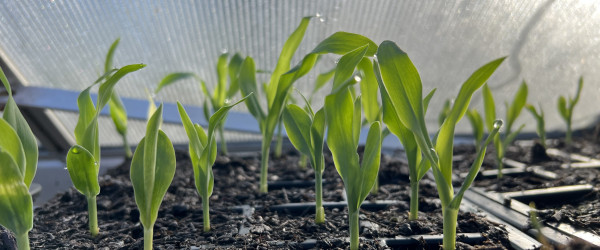So even though it’s early in the year, it’s always worth planning ahead to letting a few of your crops go to seed. Here are some of my early sweetcorn and climbing french bean seedlings that I planted 10 days ago.
Generally you’ll produce way more seeds than you’ll ever get in a packet, and if you dry and store the seeds well over winter you’ll have plenty to plant next year.
Another benefit of saving seeds is that if it grows well one year, it’s very likely to grow well for many years to come.
How to dry your seeds
Drying seeds is an important step in seed saving and storage. Here are some general steps you can follow to dry seeds:
-
Harvest mature seeds: Make sure the seeds are fully mature and dry on the plant before harvesting them. Collect them on a dry day to avoid excess moisture.
-
Remove any debris: Remove any plant material, such as stems or leaves, from the seeds.
-
Spread the seeds out: Spread the seeds out in a single layer on a clean, dry surface. You can use a paper towel, a plate, or a tray. Make sure the seeds are not touching each other to allow for air circulation.
-
Dry the seeds: Place the seeds in a warm, dry, and well-ventilated area. A room with good airflow and low humidity is ideal. Avoid direct sunlight, as it can damage the seeds. Allow the seeds to dry for several days until they are completely dry and brittle.
-
Store the seeds: Once the seeds are dry, store them in airtight containers, such as jars or plastic bags, in a cool and dry place. Label the containers with the type of seed and the date of harvest.






